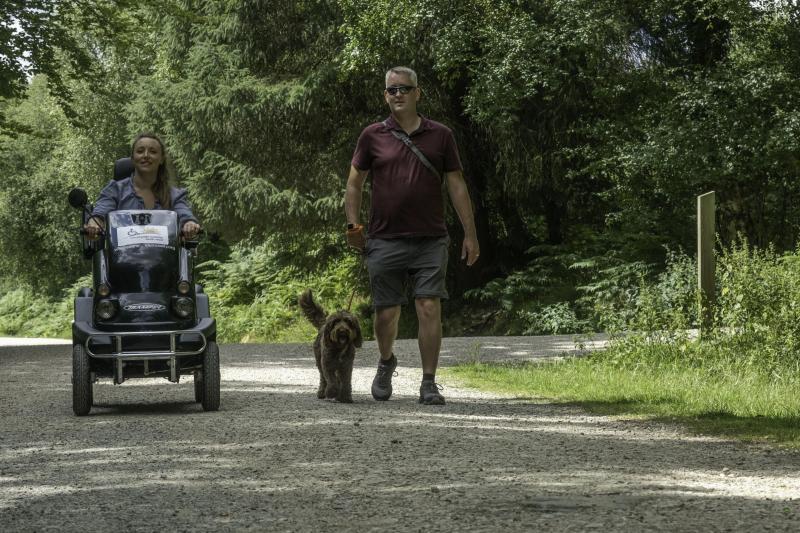Best Dog Friendly Days Out Uk – Northumberland has around 30 miles of wide, dog-friendly beaches, a national park with more than 600 miles of marked footpaths and paths and some of the best dog walking areas in the UK. However, if you are looking for a change or need a ‘Plan B’ for wet weather, there are plenty of attractions you can visit with your dog in tow.
Here, in no particular order, is our round-up of the best dog-friendly castles, Roman fortresses and country houses. Please check the restrictions for individual attractions before your visit.
Best Dog Friendly Days Out Uk

The ruins of Dunstanburgh Castle rise above the Northumberland coast on a remote island and are accessible via a beautiful 1.5 mile coastal footpath from Craster. It is easy to see why it is one of the most photographed locations in the province. The castle was built on a large scale and could rival any castle of the time. Today, visitors can explore the Great Gate and Tower of Lilburn, which offer stunning views north towards Bamburgh Castle. Entry is free for National Trust and English Heritage members and dogs are welcome on leads.
A Dog Friendly Day Out In East Devon
The car park is in Craster, home to the famous smokehouse, some wonderful art galleries and a selection of dog friendly pubs.
With a charming medieval castle, a Greek villa (Belsay Hall) and 30 acres of listed gardens, Belsay is well worth a visit. Dogs on leads are welcome in the gardens. There you will find the country’s largest collection of beautiful rhododendrons, a formal yew garden and a magnolia terrace. An enchanting quarry garden with gorges, pinnacles and steep cliffs, inspired by the quarries of Sicily, has its own microclimate and is home to many exotic plants.
Dogs are not allowed in the Greek Revival castle or villa. However, if you travel as a couple, you can take turns enjoying the view from the top of 14
The 73-kilometer long Hadrian’s Wall, now a UNESCO World Heritage Site, was built to protect the wild northwestern border of the Roman Empire. Housesteads, located halfway along Hadrian’s Wall, is the most complete example of a Roman fort in Britain and one of the most famous in the entire Roman Empire. It sits high on a large embankment and offers wonderful panoramic views. It was built a decade after 122 AD, when work on the wall began, and by the end of the 4th century it was manned by an infantry regiment of 800 men.
A Dog-friendly Travel Guide To Whitstable, Kent — A Considered Life
Century Excavations have uncovered the most important buildings, defenses and civilian settlements outside the walls. Dogs on a leash are welcome.
No visit to Alnwick is complete without a visit to Barter Books. Housed in the town’s old Victorian railway station, it houses one of the largest collections of antiquarian books in the UK. You could literally wander the grounds for half a day. Real campfires in winter, a model train, a train station buffet and a children’s room – Barter Books is a must – not just for bookworms. Dogs are also welcome here – the cafe even has a dog area, so you can relax and enjoy a coffee or lunch with your four-legged friend.
Just a few miles off the coast of Northumberland, Lindisfarne Island is a must-see. Even though the tide is cut off from the rest of the world twice a day, you can drive, walk or cycle across the dramatic Causeway to Holy Island (check safe crossing times). Lindisfarne Priory, the epicenter of Christianity in the Anglo-Saxon period, is one of the region’s most revered treasures and the island remains a place of pilgrimage today. Although dogs are not allowed in the 16th year

Staff at the 19th century Lindisfarne Castle will protect you as you visit the rooms and artefacts. You can walk around the castle, spend time at Lindisfarne Museum and soak up the beautiful countryside. Lindisfarne Nature Reserve is home to rare plants and a fascinating variety of wildlife. You can often see seals on the sand, as well as puffins and dolphins.
The 15 Best Dog-friendly Days Out In The Uk
Standing 150 feet above sea level, the beautiful Bamburgh Castle is a landmark of the Northumberland coast and has served as the backdrop for many blockbuster films. Set among wildflower-studded sand dunes and overlooking the Farne Islands, it’s a place that’s hard to beat. The castle is full of myths, legends and more than 1,400 years of history that is worth discovering. Although dogs are not allowed in the castle’s state rooms and the bell tower tea room, dogs are welcome in the castle grounds, the Armstrong and Aviation Museum, the Tack Room Café and the Victorian stables.
After your visit we recommend a walk along the wide sandy beach from Bamburgh to Seahouse (3 miles each way). With grassy dunes on one side and distant views of the Farne Islands on the other, this is a gem of a beach walk. But dress warmly – regardless of the season!
Just a mile outside Rothbury is Cragside Estate, the original family home of Lord Armstrong, the Victorian inventor and industrialist and birthplace of green energy. The first building to be lit by hydropower is now owned by the National Trust and makes for a truly fascinating day out. In the main house you will find beautiful works of art and paintings, one of the world’s first hydraulic elevators, and an impressive ten-ton marble fireplace in the living room, cleverly built into the side of the cliff to support its enormous weight . In addition to the main house itself, there are over 30 miles of hiking trails to explore and a beautiful display of rhododendrons and azaleas. The gardens are at their most impressive in late spring, when literally tens of thousands of rhododendrons are in bloom.
There is also a fantastic playground and a maze for children. Dogs are welcome on the property, but must be kept on a leash at all times. Dogs are not allowed in the National Trust shop, cafe or toilets, but the cafe has plenty of picnic areas and outdoor seating.
10 Top Rated Dog-friendly Attractions And Days Out In Cheshire
This beautiful Northumberland fort crowns a hill above the River Cocket. From the nearly intact 600-year-old castle to the beautiful gold skin patterns on the walls of the Princess Room, there is, pardon the pun, plenty to keep you busy. Walk half a kilometer up the river to find the Hermitage, an iconic rock building, and return to the castle by boat. The castle and the hermitage are closed for part of the year; More information can be found on the website.
Northumberland’s Lady of the North is a country park like no other, with woodland trails, a visitor center and a huge landscape sculpture in the shape of a reclining house carved into the hillside. Open from morning to evening, there are several paths around it for you and your dog to explore the contours of this unique image (dogs must be on a leash).
The impressive man-made formation looks like a reclining lady. Made of 1.5 million tons of stone, clay and earth, it stands about 100 feet high and a quarter of a mile long. One of England’s most welcoming and dog-friendly counties, Northumberland offers countless attractions that will keep your tail wagging. Stroll up and down the sands of Bamburgh Beach, walk along Hadrian’s Wall or look past one of the many medieval castles that line this rocky north coast. There are rides on the Heatherslaw steam railway, boats to the Farne Islands, or gentler ventures such as a wet-footed walk (if you opt for the time at low tide) to Lindisfarne Priory, where curious dogs the Viking -history of the area to be able to loot. Here are some of our favorite things to do on a dog-friendly holiday in Northumberland.

Take a trip to Norham Castle. Just outside the border town of Berwick-upon-Tweed, the 12th-century fortress was initially built to protect Northumbria from the rampaging Celts. Today, the castle ruins are a great place to explore with your dog. Located on a grassy hill overlooking the Tweed River, this important fortress was besieged no fewer than 13 times, including by Robert the Bruce, who stayed there for a year. Now owned by English Heritage, dogs on leads can explore the castle ruins and wander along the banks of the River Tweed, welcoming Scotland.
Dogfriendly Magazine Issue 77
Hadrian’s Wall, a stretch of 73 kilometers between the Irish and North seas, is one of the most important places in British history. Now a UNESCO World Heritage Site, it was built in 122 AD by Hadrian, Emperor of Rome, to protect England from invaders from the north. The wall is dotted with remains of ancient Roman forts – the Romans love dogs – and our four-legged friends can walk along the wall and around some of the hill forts. One of the highlights is Fort Housteds, the most complete example

